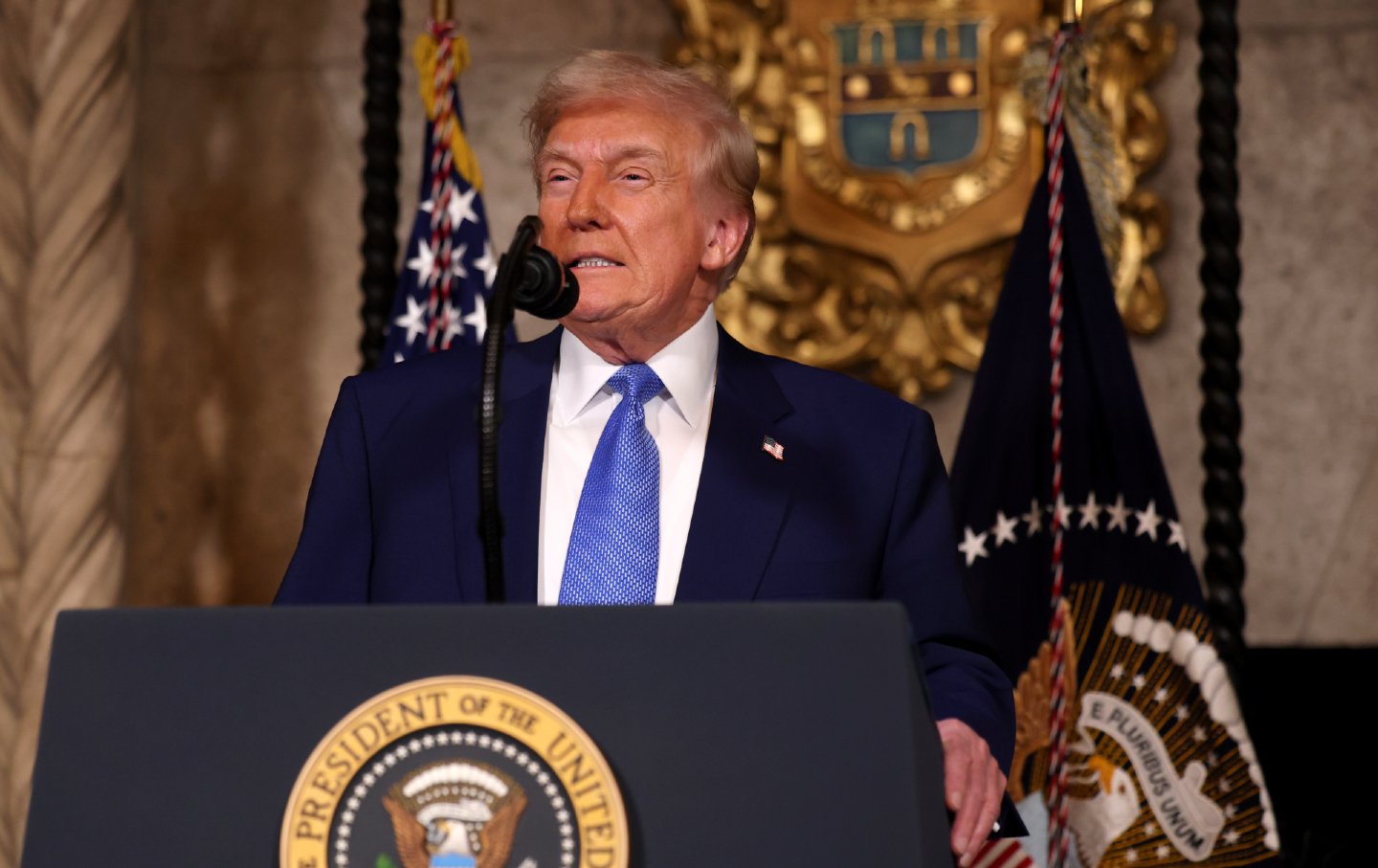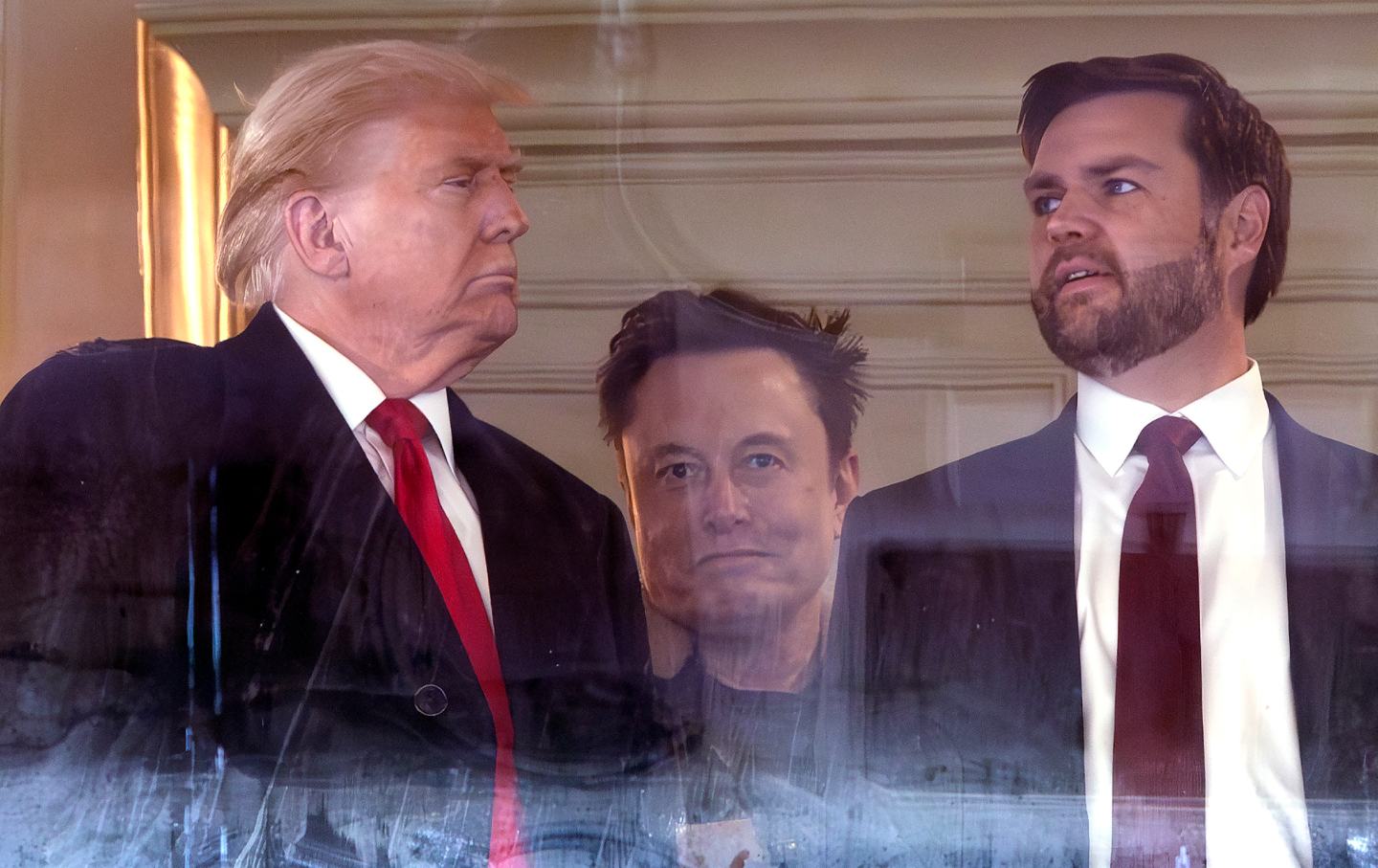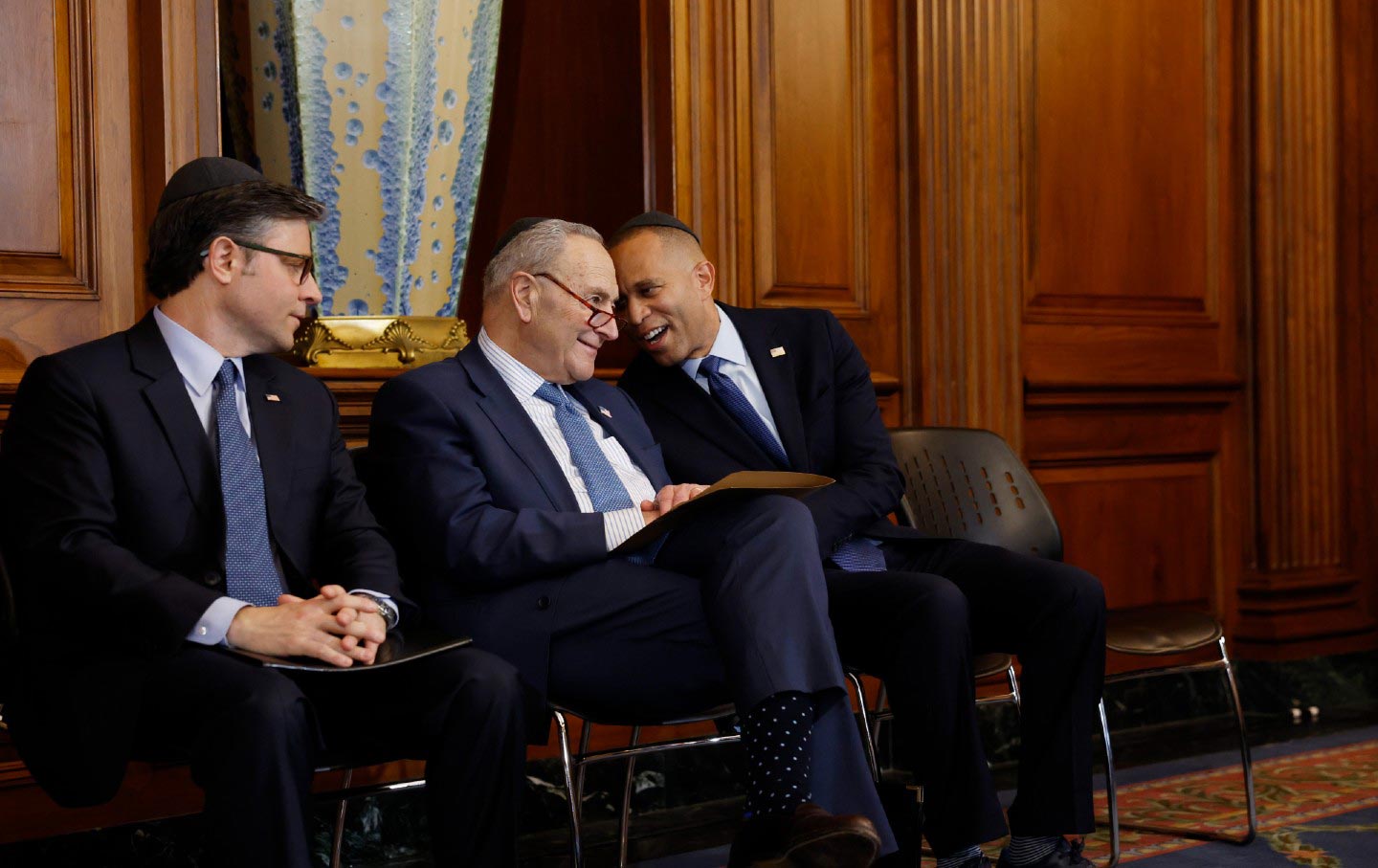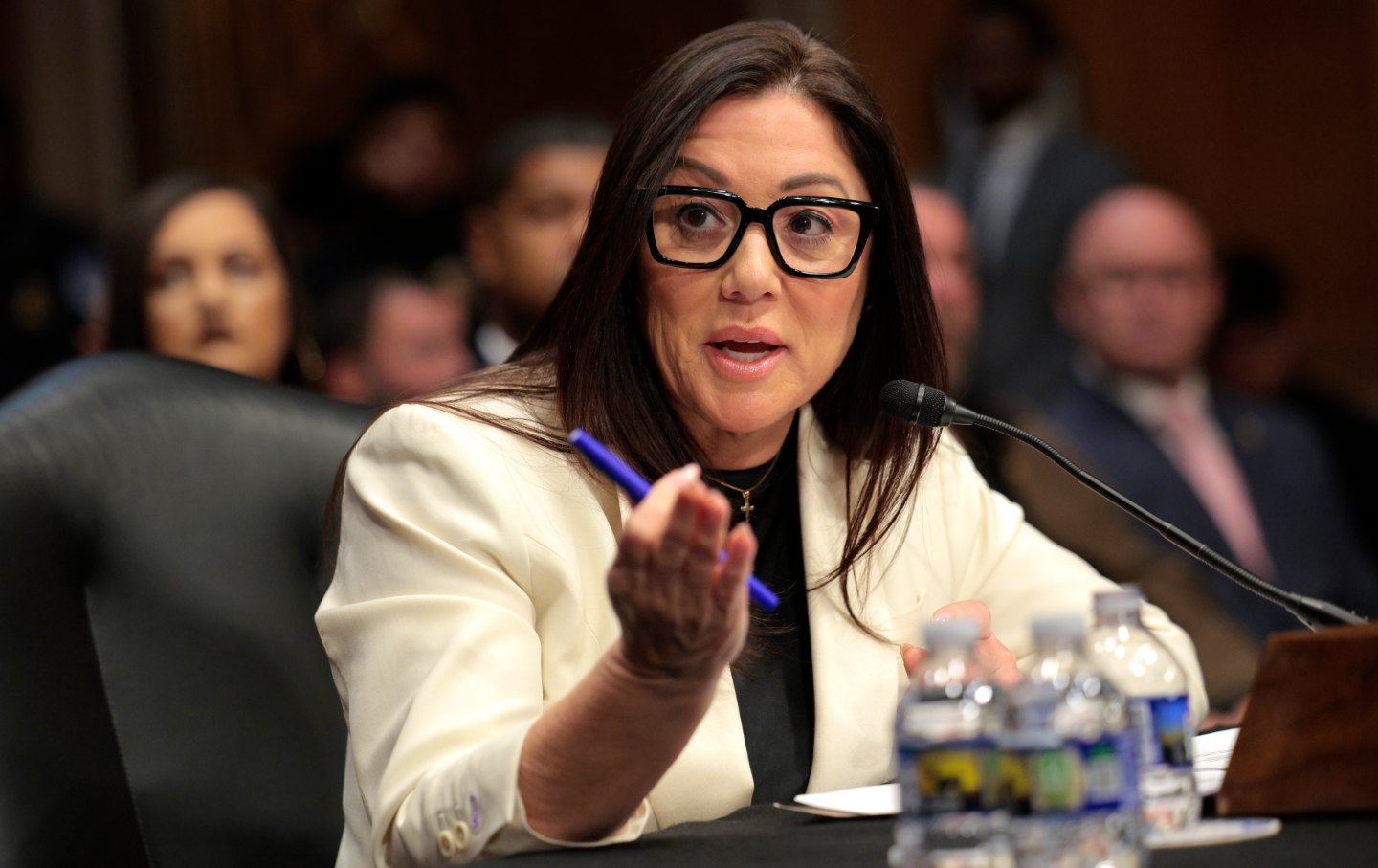What Does It Mean to Be a Labor Leader for This Moment?
Lessons from Mary Kay Henry, the first woman president of SEIU.

In 2023, nearly 100,000 workers joined unions in National Labor Relations Board elections, the most in almost a quarter century, according to Bloomberg Law. Sixty-seven percent of Americans approved of unions, according to Gallup. Support was even higher among people under 30, who backed unions at an astounding clip of 88 percent, a poll commissioned by the AFL-CIO showed.
Indeed, unions are having a moment, as Joe Biden walks the picket line and proclaims it official government policy to support union organizing. But it wasn’t always this way. In 2009, only 48 percent of Americans supported unions, according to Gallup. Instead of baristas and auto workers making headlines by going on strike and voting to unionize, it was supporters of the Tea Party who whipped the nation into a frenzy on an anti-immigrant platform. In the months that followed, the Tea Party gained more and more prominence via attacks on healthcare reform, while private-sector union membership plunged to a 100-year low of six percent.
Enter Mary Kay Henry, who had just started as the first woman president of the nearly 2 million-member Service Employees International Union. While many associate unions with manufacturing and building trades, her union represents service workers in parts of the economy that had quietly become dominant—from healthcare workers to security workers, from janitorial staff to homecare workers. Listening to workers in her membership and beyond, she recognized, long before we found ourselves in a global pandemic, that our nation was plagued by an epidemic of low-wage work. And she wanted to take action. She decided to back striking fast-food workers in New York City, who walked off their job demanding $15 and a union.
With our national minimum wage stuck at $7.25 per hour, many dismissed the notion that workers could demand a minimum of $15 per hour. But she never wavered. Year after year, even when campaigns stalled, Henry pushed for more investment in organizing low wage workers.
The demands of the courageous fast-food workers caught on: soon homecare workers, airport workers, adjunct professors, and others joined in; and their demands flipped the politics of wages across the country, with politicians from small towns to the largest cities and states coast to coast, joining the call for a $15-an-hour minimum wage.
Fifteen dollars an hour went from “laughable to viable,” according to The New York Times, and in its first 10 years, the movement won $150 billion in raises for 26 million workers, a report from the National Employment Law Project shows.
The Fight for $15 and a Union is a crowning achievement for Henry, who has passed along the reins to lifelong organizer and the first Black woman president of SEIU, April Verrett. But her big vision, fierce determination, humility, skilled coalition building, and relentless focus on the needs, power and dignity of workers have produced many lessons over her 14-year-tenure that the labor movement and progressives should build on moving forward.
Practical Audacity
Sometimes social movements launch bold demands for change, with the goal of being bold. And there’s a role for that—to change the narrative or create the space in the public imagination for more. But often bold demands are simply bold demands, without a practical strategy to achieve real change. The Fight for $15 and Mary Kay Henry’s leadership of the effort went far deeper than the audacious demand; it anchored in practical theories for how progress could be made, an investment in those strategies and capacities, and the willingness to experiment and learn along the way.
Uncommon Wisdom
The labor movement, like any movement or subculture, holds conventional wisdom that defines the terms of the conversation. Labor institutions, like other institutions, are not predisposed toward change. And there are stories that reinforce the status quo—stories about what kinds of workers can and should be organized. Or who is considered a worker and what that means for the role of unions. Or how workers should be organized—shop by shop, not by sector. From supporting gig worker organizing, to seeding a partnership with the National Domestic Workers Alliance, to championing sectoral strategies for raising wages and improving standards—and helping Starbucks workers chart their path to a union—Mary Kay Henry never allowed herself or her union to be constrained by common wisdom when it came to what workers need and deserve.
And she understood that workers can’t win the changes they need without deep partnerships with community organizations. She forged authentic rather than transactional ties with leaders of community organizing groups and networks, based on trust, shared interests and vision.
Popular
“swipe left below to view more authors”Swipe →A Leader for All Workers
Unions are democratic organizations, where dues-paying members elect the leadership they want to represent them. Those leaders are expected to negotiate on their behalf, and represent their interests at the bargaining table and at every table where decisions are made. But in the generations since our model for collective bargaining was born, the world has changed dramatically. Attacks on unions and the right to organize, combined with economic trends that have diminished workforces with high union density and made unionization more difficult have catalyzed a decline in union membership in recent decades. And working people across the economy have suffered as a result. The era under Mary Kay’s leadership has been pivotal—do or die. And the question has been: What does it mean to be a labor leader for this moment?
While Mary Kay never veered from fiercely championing the economic interests of her members, she led for the multiracial working majority in America, with a deep commitment to the lowest-wage earners—the most insecure among us. She led her union to deepen and broaden its commitment to racial justice, while supporting organizing in white working-class communities. She showed up for citizenship for undocumented workers and their families, while walking alongside the Poor People’s Campaign in its call for a moral movement to end poverty in America. She answered the call to leadership by modeling leadership for a struggling majority, for this moment of economic insecurity and extreme inequality. All while paving the way for April Verrett and the next generation of leaders in her union to step powerfully into their leadership.
Mary Kay Henry will be the first to tell you that leadership is not a singular proposition. She will tell you that everything she has accomplished has been enabled by the courage and commitment of the members of SEIU, the brilliance of the leaders they have elected, and the staff who organize and serve union members at every level. And yet, she is singular in what she has contributed as a leader, and working people in America are better off for it.
More from The Nation

This Executive Order Reveals the Trump-Musk Endgame This Executive Order Reveals the Trump-Musk Endgame
A recent order aimed at destroying independent regulatory agencies isn’t just about taking control of the state—it’s a giant cash-grab in disguise.

Trump’s Plan Is to Flood the Zone With Garbage Trump’s Plan Is to Flood the Zone With Garbage
All of it is meant to disorient and overwhelm us. The question is: How are we to navigate all that excrement?

Trump Is Unpopular—and So Are the Do-Nothing Democrats Trump Is Unpopular—and So Are the Do-Nothing Democrats
The president is increasingly hated, but so is an opposition party that fails to oppose.

Trump’s Labor Secretary Pick Turns Out to Be Super Anti-Labor Trump’s Labor Secretary Pick Turns Out to Be Super Anti-Labor
Surprise, surprise: Former representative Lori Chavez-DeRemer supports anti-union “right to work” laws and rejects a national minimum-wage hike.




